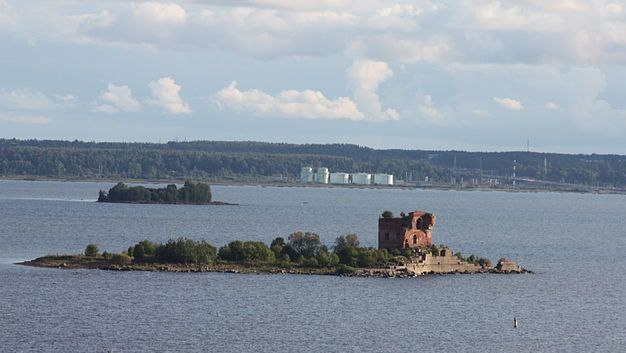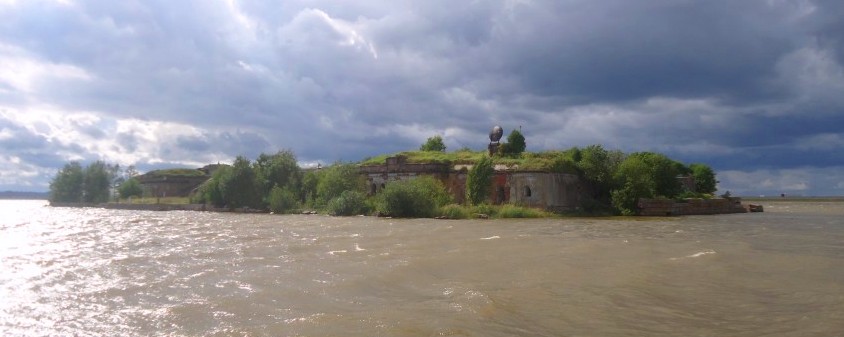Kronstadt forts.
It is interesting that Kronstadt started its history as a fortress. The beginning of Kronstadt history throws back to the 18th century.
 Kronstadt fortress
Kronstadt fortress
When Peter I won back native Russian lands along the Neva river, the defense problem of new territory became a vital issue for Russia. On May 27, 1703 the Peter and Paul fortress was founded. But the Swedish troops were closely to the new fortress. And the main problem was a strong Swedish Navy which could raid new city from the sea.
Russian poet Alexander Pushkin wittily said about it:
And thus He mussed:
“From here, indeed,
Shall we strike terror in the Sweden;
And here a city by our labor
Founded, shall gall our haughty neighbor;
‘Here cut’ – so Nature gives command –
‘Your window trough on Europe; stand
Firm-footed by the sea, unchanging!’
(The Bronze horseman).
Peter I understood this problem, he dealt with strong and clever enemy. But the nature again prompted the best decision. Narrow and shallow Finnish gulf was very hard for navigation.

Only small and narrow channel was available for shipping. This waterway lays just on the southern side of the Kotlyn island. Even now all ships coming to and from St Petersburg use this way. Thatswhy if you want to control it, put a couple of guns near and job will be done. Peter I thought so in Autumn 1703. Peter needed a fortress for controlling the approaches to St Petersburg from the sea.
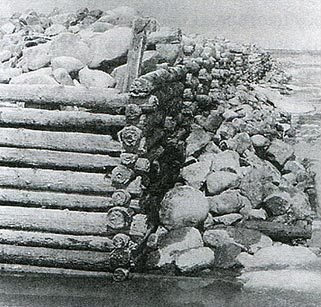 And work started in winter 1703-1704. An artificial island on a cribworks was created near with the fairway. Cribwork is an open construction of beams which provides lateral stability. It can be made of steel or wood. When filled with concrete, it carries the foundations of bridges, artificial islands and so on. The whole structure was strengthened by piles. This technology of fort-building used till 20th century in Kronstadt. All forts were built according the same techniques.
And work started in winter 1703-1704. An artificial island on a cribworks was created near with the fairway. Cribwork is an open construction of beams which provides lateral stability. It can be made of steel or wood. When filled with concrete, it carries the foundations of bridges, artificial islands and so on. The whole structure was strengthened by piles. This technology of fort-building used till 20th century in Kronstadt. All forts were built according the same techniques.
On the top of the island 14 guns were installed. This fort was named Kronslot (a which means a “crown castle” in German).
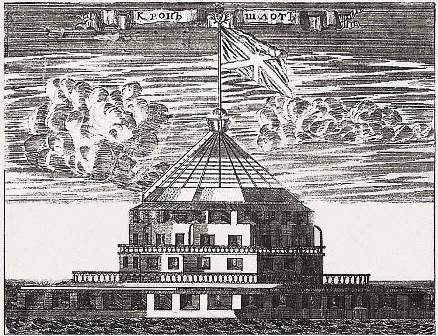 Kronslot
Kronslot
It was the first fortification of Kronstadt area which was inaugurated on May 18, 1704. This is a birthday of Kronstadt. In 18-19th centuries Kronslot was reconstructed several times.
During two centuries (from 1704 to 1914) the complex of 20 forts around Kotlyn island and 2 forts (the Ino and the Red hill) on the Northern and Southern banks of the Finnish gulf were built. The Kronstadt fortress became one of the most fortified area in the World and the strongest naval fortress of Europe.
Chronology and review of Kronstadt forts construction.
Geographically all forts can be divided into the northern and southern forts because of the situation around Kronstadt. The southern water way was and is the most useful and the first forts were created here: Kronslot, the Citadel (Peter I), Risbank (Paul I), Grand Duke Constantine, Alexander, the Menshikov battery, Milyutin, 1st and 2nd Southern forts. The northern channel was not so suitable for shipping and it was armored only in times of the Crimean war (1853-1856) and before the World War I. Seven Northern forts were built here. Two strong forts (the Obruchev and the Totleben forts) were completed just before the WWI.
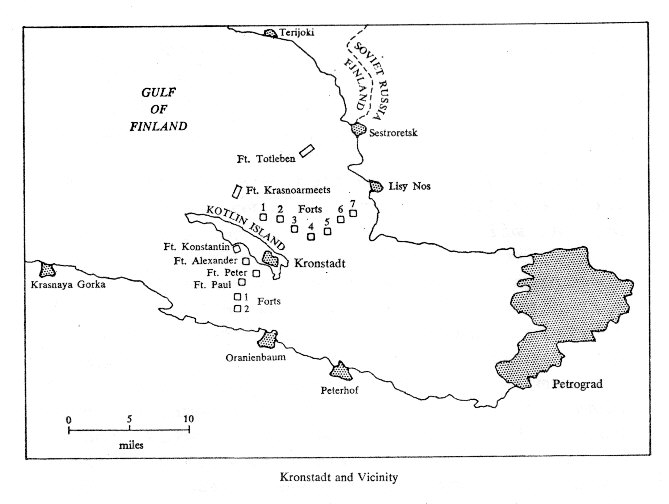
In addition for better coverage and protection the approaches to Kronstadt two costal forts were created in the beginning of the 20th century (the Red hill fort and the Ino fort).
On the western side of the Kotlyn island fort Shanets and Rif can be founded.
The southern forts.
Kronslot.
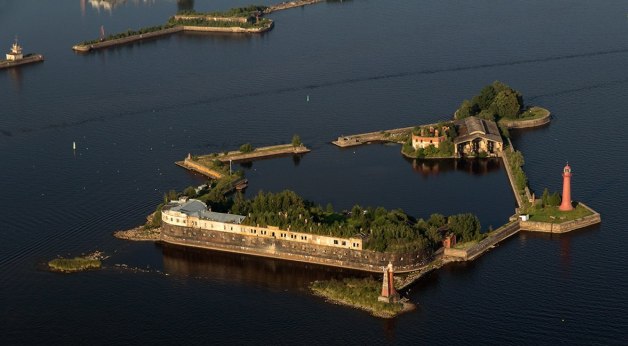 kronslot fort
kronslot fort
It was built by Domeniko Trezini in 1703-1704. 1717-1724, 1747 – modernization of the first wooden construction. In 1783-89 fort was rebuilt in stone. 1850-1853 – modernization under the supervision of engineer Zarjetsky. The Nicholas battery was built and armed with 11-in guns. In 1896 the fort was disarmed and till this day use as a warehouse.
The Citadel (Peter I).
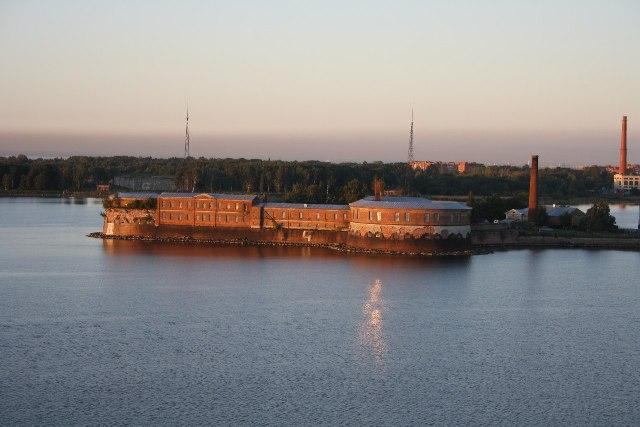
The wooden fort was built up to 1724 for protection of the Merchant’s and Middle harbors. After the catastrophic flood of 1824 the Citadel was reconstructed in stone (1828-1834). In 1834 Nicholas I renamed fort Citadel to fort Peter I.
In 1896 the fort was disarmed and till this day use as a shells warehouse.
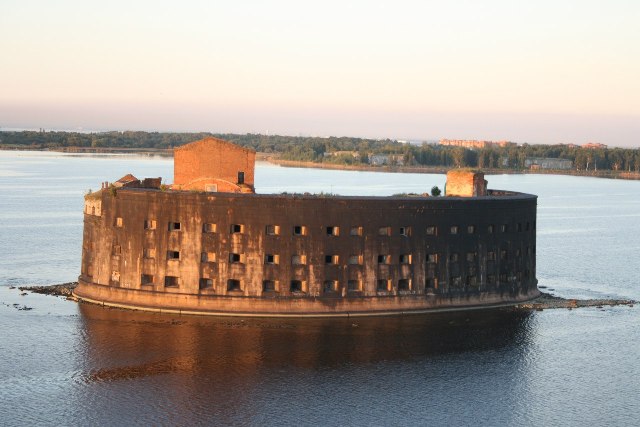
It was built in 1836-1845. In 1896 the fort was disarmed and converted to the plague laboratory. This laboratory existed in 1897-1917. The fort Alexander used as warehouse till 1980-s.
Fort Constantine.
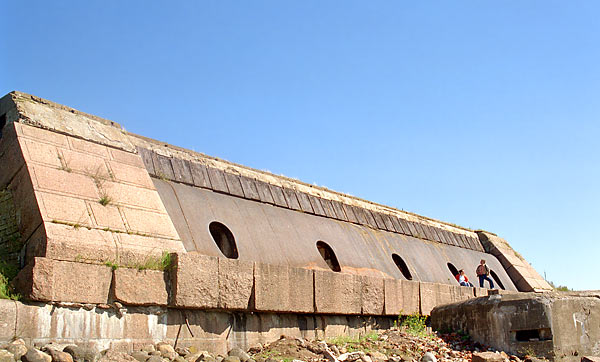 fort Constantine
fort Constantine
First battery was built here in 1808 for protection of the main water way. Many times the fort was reconstructed. One of the first in Kronstadt it was armed with ruffled cannons in mid 19th century. Fort was left by solders only in 1950-s. Now the hotel and yacht-club are here.
Fort Risbank (Paul I).
The construction work started in the late 18th century and finished only on 1850-s. It was the strongest fort of the Kronstadt fortress, armed with 380 guns of different types and calibers. Risbank means the "the mark on the shallows". Fort was used as a warehouse of mines and it was blown up because of a fire in 1923. According to one version, it was a diversion of the British Secret Service. In fact the reason of detonation was fire and negligence of sailors.
The first artillery battery was created here in 1807–1808. Just there was a threat of war with Britain, so Kronstadt fortress was armed hastily. It was rearmed in mid 19th century. The 6-in Canet guns were placed there. All steam engines gave way to modern diesel generators and electric lighting. There were carried out some experiments on the wireless radio communication between neighboring forts in 1899. However, after the WW II, the Kronstadt fortress was disarmed in 1950-1960-s. As a result, the fort Milyutin and almost all another forts can be visited by everyone.
1st and 2nd Southern forts.
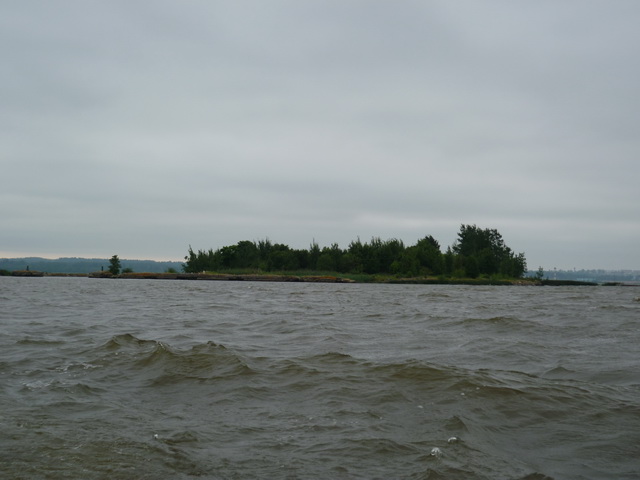
Two this forts were created in 1853-1855 when the united English and French squadron threatened Kronstadt during the Crimean war. Firstly this forts were a temporary wooden batteries on the pylons. Later they were reconstructed in stone. Form the end of 19th century this forts used as a warehouses. Now these forts are abandoned too.
The Northern Forts.
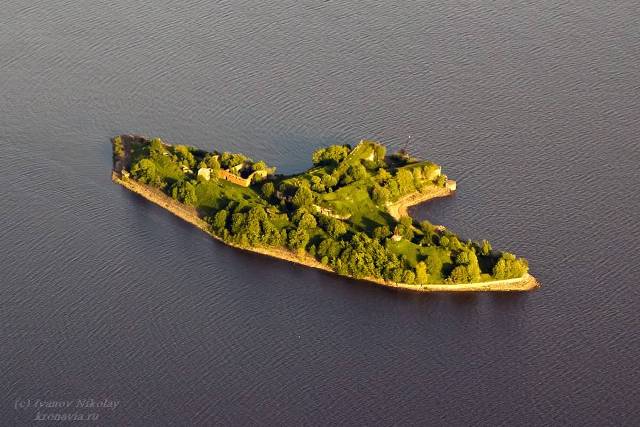
Seven northern forts were built for protection of the northern water channel. Distances between them are about 2-2,5 km for continuous gun's fire zone and convenient ammunition supply of forts by water. New vessels in mid 19th century were able to use the Northern fairway and in times of the Crimean war (1853-56) English and French squadron threatened Kronstadt from the North. In a hurry constructed temporary batteries later were turned into a seven forts armed with 9 and 11 in guns.
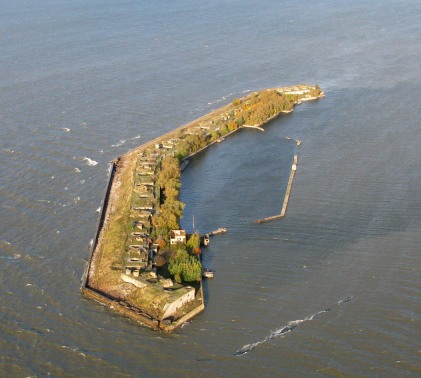 fort Obruchev
fort Obruchev
In the beginning of the 20th century new forts were created. The forts Obruchev and Totleben.
All of them were armed with modern 9, 10 and 11 in ruffled guns and have a size about 800-900 meters. Together with forts Ino, the Red hill, Constantine, Rif and Milyutin, forts Obruchev and Totleben were the main striking force of the fortress in the 20th century and the WWII.
On the western side of the Kotlyn island fort Shanets and Rif you can see.
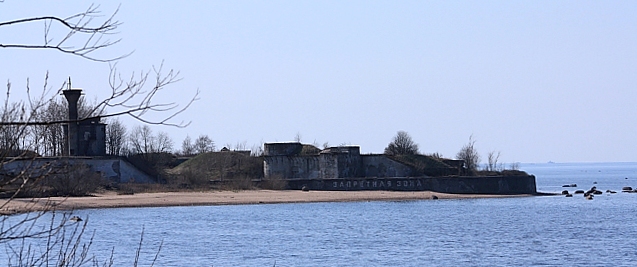 firt Rif
firt Rif
Fort Rif is absolutely closed for visiting!
NB. Do not try to see the forts by yourself! Part of them still use as a military objects (the Citadel (Peter I), Kronslot, Rif). The condition of forts are very bad and sometimes dangerous so visit it only with qualified guide.





